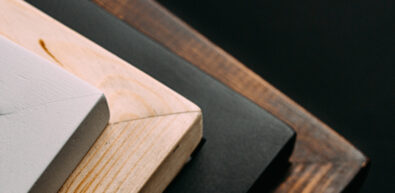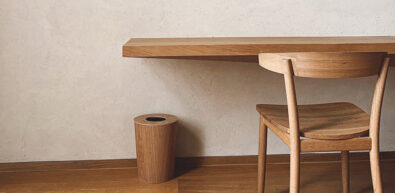Table of Contents
Knapp joint, also popularly known as the pin & scallop, Half moon, or pin & cove, is a mechanized technique utilized during the industrial revolution age for making drawers. This technique was considered a significant advancement in furniture making at that time because it involved the use of machines. However, this technique was only relevant for just 30 years, precisely a period between 1870 to 1900.
Interestingly, even though the time of the Knapp’s joint is passed, we can still see relics of them today, and that is why it is not uncommon to see people ask questions like, “is furniture with Knapp joint valuable?”. It’s an antique anyway, so it should be worth quite a fortune. Well, you will find out whether or not it is valuable after reading through this article. Keep reading!
Are furniture with Knapp joint valuable?
Yes, the Knapp’s joint is valuable. If you’ve just inherited your grandma’s drawer with a Knapp’s joint, don’t be quick to judge it by its appearance because that has nothing to do with its condition. If you don’t want to keep it and it is in good condition, it might interest you to know that you can sell it for a price of about $75 to $300. Yes, you heard me right! In fact, some Knapp joint furniture can be sold at a price as high as $590.
What is a Knapp’s joint?
Knapp’s joint is an antique joinery technique that involves the use of machines. This technique was devised by Charles Knapp, who was a renowned inventor, in the 1860s but was patented in the year 1867 and received worldwide acceptance in 1870. This technique was invented to increase the rate of production and to be used as a better alternative to the dovetail method, which was common during the time. Later on, after about 30 years, the Knapp’s joint became outdated after the new machine was invented for the dovetail technique.
Knapp joint history
Knapp’s joint was designed in the 1860s in Waterloo, Wisconsin, by Charles Knapp as an alternative and better method to the then conventional dovetail joinery style, which was done exclusively with the use of the hand. In the year 1867, Charles Knapp patented his invention, which led to the mass production of drawers by various furniture manufacturing factories using his machine.
Unfortunately, Knapp’s invention was relevant in the furniture industry for only 30 years (1870 to 1900) because of the adoption of the new mechanized dovetail technique.
How old is Knapp joint?
Knapp’s joint was developed in the era of post-civil war in the united states. But the mass production and use of the technique started in 1870, which means if you have a piece with a Knapp joint, it should be over a century-year-old. Some can even be as old as 150 years.
Is the Knapp joint rare?
Yes, the Knapp’s joint is very rare. Nowadays, the Knapp joint method has been replaced by more sophisticated and easier methods. Hence, it will be hard to see furniture made using the old fashion Knapp joint technique. The Knapp joint reach has reached its prime since the early 19th century as it was only used for only 30 years.
Knapp joint furniture value
The value of Knapp joint furniture is appraised just as every other antique item. Most times, antiques are checked against conditions, rarity, maker’s mark, authenticity, age, and every other quality to determine their value. Fortunate enough, Knapp furniture will meet most of the criteria for high value save for their relevance in the market, which may affect their value.
Knapp joint machine
The machine that was used for making Knapp joints on furniture is known as the router. The machine had five cutting parts — the circular cutter, auger, 2 V-shaped cutters, and a hollow auger. The work of the auger was to make a hole in the lateral part of the drawer, while the hollow auger was used to cut a peg from the front of the drawer. The other cutters were used to shape circles around the holes and pegs.
How do you cut a Knapp?
- Design a template for your Knapp’s joint. To do this, draw the joint and scale it up by 2x.
- Place the template on plywood and cut it out with a bandsaw.
- Position the pins on the already drawn pin template and secure them with glue.
- Add some wood glue on top of the pins and glue the backer on top, then weigh it down.
- After the glued wood dries, peel off the paper template. Do this from the other side for convenience.
- Cut out the complimenting template on the bandsaw and drill the necessary holes.
- Attach the template to the metal pantorouter template holder.
- To cut out the holes, make the pins 5/16 in diameter.
Different types of furniture joints
In the 21st century, the furniture industry has gone through remarkable changes as there are now new advanced and easy techniques of joining furniture. Some of these methods include;
- Dovetail joint
- Butt joint
- Dowel joint
- Miller joint
- Tenon and mortise joint
- Housed joint
- Tongue and groove joint
- Rebate joint
- Lap or halved joint
- Dado joint
Knapp joint vs. dovetail joint
Knapp joint and dovetail joint is both joinery techniques in the furniture-making business. However, the only difference between these two contemporary techniques is that the Knapp’s joint is made with a machine, while the dovetail technique is made with the use of the hand.
Is antique furniture valuable?
Yes, antique furniture can be valuable. You can sell your antique furniture at a good price if it is still in good condition, the material used is of good quality, and the piece, in general, speaks of excellence. And if you decide to go the extra mile of trying to revamp the appearance of the piece, you may end up increasing the value of the piece altogether.





